Keynotes

Jean-Michel Roger
Jean-Michel Roger focused his research on the robustness problem. In 2003, simultaneously with Prof. Tom Fearn, he proposed a new generic method called External Parameter Orthogonalization (EPO) which permits to eliminate specific spectral effects from the NIRS calibration and thus to solve certain problems of robustness. He is also involved in the design of portable or online spectrometers using filters technology. In this aim, he developed a method (CovSel) that allows to select wavelengths with regard to multiple responses. He has created ChemHouse, a chemometrics research group, forge of the ChemFlow software (see https://chemproject.org).
Lecture: Increasing the robustness of chemometric models by calibration transfer, orthogonal projections, domain adaptation
Because they rely on indirect measurements, spectrometry-based sensors require the use of a calibration model. Typically, this model is performed on a sample basis that is representative of variations in the variable of interest. However, the use of these sensors can subject this model to robustness problems. These robustness problems are due to the variation of external factors, such as temperature, chemical composition or changes on the spectrometer. A strategy for dealing with robustness problems will be presented, depending on the availability of knowledge about the influencing factors. An overview of correction methods will be presented. A focus will then be made on robust modeling methods, in particular on methods using orthogonal projections and domain adaptation.
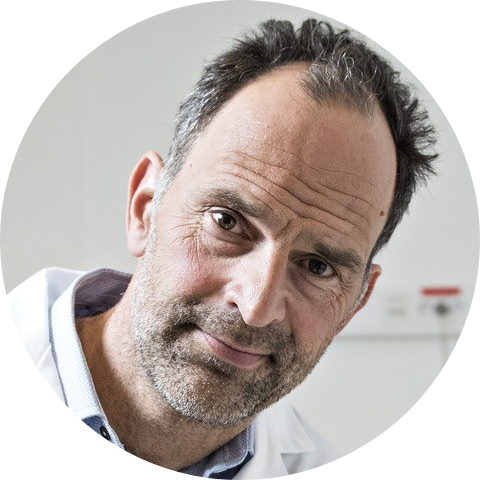
Jens Petter Wold
Dr. Jens Petter Wold is a senior research scientist at Nofima AS, Norwegian Food and Fisheries Research Institute, Norway. He has a PhD in Food science and bio-spectroscopy from The Norwegian University of Life Sciences in Ås, Norway. In 2001-2002 he spent one year at Centre for process analytical chemistry (CPAC) in Seattle, WA. He has published more than 100 scientific papers within the field of rapid and non-destructive quality assessment of foods and is specialized within fluorescence, near-infrared and Raman spectroscopy, including hyperspectral imaging. He has contributed to a successful in-line NIR hyperspectral imaging system (QVision 500, TOMRA) which is used worldwide for in-line food quality control. Jens Petter is now director of SFI Digital Food Quality (www.digifoods.no), a centre for research driven innovation with the aim of developing smart sensor-driven solutions that deliver the essential food quality information required for successful process optimization and digitalization of the food industry.
Lecture: In-line NIR spectroscopy for quality assessment of heterogeneous foods
Near-infrared spectroscopy (NIRS) is a potent method for true-time quality control and process monitoring in the food industry, and the potential for process optimization is large. NIRS is an excellent tool for rapid and nondestructive determination of typically fat, water, protein and carbohydrates in various foods and different applications are established for both at-line and in-line monitoring, and different types of commercial near-infrared (NIR) instruments are used for this.
Representative sampling is often a limitation with spectroscopic methods regarding heterogeneous foods. NIR reflection works very well on continuous streams and for determination of bulk composition of e.g. ground meat. But when single products need to be characterized, such as chicken fillets, fish fillets or crabs, we meet challenges due to heterogeneity of the products. The surface is usually not representative for the interior of the sample. And maybe the chemical composition varies also around at the surface. Near-infrared radiation in the wavelength region 760-1100 nm is relatively weakly absorbed by water and has therefore a good penetration depth in most foods. This enables transmission and interactance measurements so that larger volumes of the samples can be probed. NIRS also lends itself very well to hyperspectral imaging, which is a powerful tool for effective sampling of heterogeneous foods. In this talk I will present and discuss the challenges of heterogeneity and how they can be solved by novel and tailor-made instrumentation. Many of the presented examples are now well working smart sensors in the food industry.
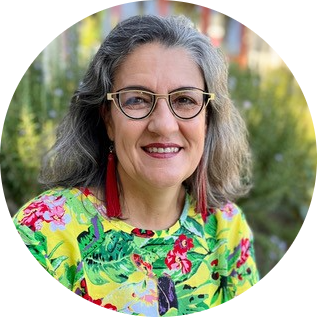
Marena Manley
Marena Manley initiated and implemented research using and applying near-infrared (NIR) spectroscopy research at the University in the late 1990s. This was followed by the introduction of NIR hyperspectral imaging research in the mid-2000s. Her research group was one of the first to perform such work in South Africa and Africa and to publish cereal NIR hyperspectral imaging investigations. After completing her PhD and 18 months at an NIR spectroscopy instrument manufacturing company in the United Kingdom, Marena joined Stellenbosch University in 1997. She has been a professor at the Department of Food Science since 2010 where she has supervised more than 70 postgraduate students and published more than 110 papers. In addition to NIR spectroscopy and hyperspectral imaging research, which focuses mainly on grain (wheat, maize, barley), Marena and her postgraduate students also investigate X-ray microcomputed tomography as an analysis technique. This is mostly applied to study and characterise cereal grains and baked products. Marena also supervises cereal technology and chemistry research projects.
Lecture: The road less travelled: NIR (hyper)-spectral imaging in cereal quality and safety
Near infrared (NIR) hyperspectral imaging has increasingly been investigated for the quantification of cereal grain composition and detection of quality and safety characteristics, since the first publication in the mid-2000s. It advances on conventional NIR spectroscopy by offering, in addition to compositional, spatial information. This enables more detailed characterisation of heterogenous cereal samples. Early studies on whole grain cereals used the advantage of pixel-wise information. However, when objects from different classes have many similar pixels, the object-wise approach may provide more accurate predictions. The object-wise approach is increasingly used in recent NIR hyperspectral imaging (or in this case rather spectral imaging) investigations. Object-wise refers to the average or median spectrum of all pixels in an image (or part thereof) for development of prediction or classification models. Although there is merit in the use of the object-wise approach, the value of the information provided in the spatial dimension of a hyperspectral image with the pixel-wise approach should not be underestimated or neglected. These and other trends/advances in cereal quality and safety applications with NIR (hyper)-spectral imaging will be presented and discussed.
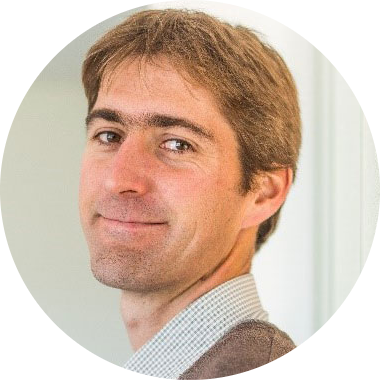
Wouter Saeys
Wouter Saeys obtained his Master’s degree in Bioscience Engineering: option Agricultural Engineering from KU Leuven, in 2002. On the basis of his Master’s thesis on plant distance control for precision agriculture applications, he was awarded the engineering prize by the Royal Flemish Society of Engineers (KVIV). In 2006, he obtained a PhD in Bioscience Engineering from KU Leuven under the supervision of Professors Herman Ramon and Josse De Baerdemaeker for his research on precision fertilization with animal manure using NIRS for on-line manure composition measurement. As a postdoctoral fellow of the Flemish Research Foundation (FWO-Vlaanderen), he specialised in light transport modelling during a six month stay at the School for Chemical Engineering and Advanced Materials of the University of Newcastle upon Tyne, UK, under the supervision of Dr. Suresh Thennadil, and in Chemometrics during a six month stay at the Norwegian Food Research Institute – Matforsk, Norway, under the supervision of Dr. Tormod Naes. In 2010, he was appointed as assistant research professor at the KU Leuven Department of Biosystems, where he leads the Biophotonics group (www.biophotonics.be) with a focus on applications in the AgroFood chain and is responsible for the Master in Biosystems Engineering. His main research interests include light transport modelling and optical characterisation of biological materials, chemometrics and digital agriculture. In 2013, he was awarded by the European Network of Business and Industrial Statistics (ENBIS) with the ‘Young Statistician Award’ for his work on multivariate calibration of spectroscopic sensors in the agrofood industry. Since 2019, he is professor in the KU Leuven Department of Biosystems and in 2022 he has been rewarded by the Special Research Fund (BOF) with a 3rd term of 5 years as Research Professor. He is member of the editorial boards of the Journal of Near Infrared Spectroscopy and Biosystems Engineering and of the Chairman Advisory Committee and the Education Committee of the International Council of Near Infrared Spectroscopy (ICNIRS).
Lecture: Harvest planning in apple and pear with spectral sensors in the orchard
Although pome fruit such as apples and pears are only harvested once per year, they can be consumed year-round thanks to controlled atmosphere storage. However, as the biochemical processes in the fruit continue during storage, the harvest time determines the storage potential and the final consumption quality. If fruit are harvested too early, they may not mature fully, resulting in poor consumption quality. On the other hand, if the fruit are harvested too late, the enzymatic maturation processes are already too far advanced to allow long term storage. Therefore, it is crucial to harvest the fruit at the optimal state for the intended storage period. As the harvest of pome fruit for fresh consumption is still done manually, most growers have to rely on seasonal workers to pick the fruit. To hire these seasonal workers for the right period, fruit growers should thus have information on the optimal harvest window well in advance. To this end, the Flanders Centre of Postharvest Technology combines spectral measurements on the fruits throughout the season to quantify their maturity state with fruit growth models. In the past, the fruit measurements were performed destructively in the laboratory which involved considerable sample logistics and limited the number of samples that could be analyzed. Recently, these sample logistics have been reduced considerably thanks to the use of portable spectral sensors which allow to measure the fruit non-destructively on the tree. As the spectral sensors are equipped with a GPS, the maturity indicators (SSC, firmness) are automatically linked to the location in the orchard. This supports the growers in planning their harvest logistics and deciding on the order in which their orchards and even the zones within their orchard are harvested.
Industrial session

Paolo Berzaghi
Paolo Berzaghi obtained his bachelor degree in Agricultural Science from the University of Padua (Italy) in 1988. In 1991 he moved to US to begin a Master program in dairy nutrition at Virginia Tech (VA, USA). He began working at the University of Padua in 1993 as research assistant in the Animal Science Department and he is now Associate Professor. He was a Fulbright scholar between 1997 and 1998 spending 4 months at Penn State/Infrasoft International with Dr. Shenk. During that period he was heavily involved in developing and testing WinISI 1.0 and the Local algorithm for calibration development of NIR instruments. Beginning March 2000 he worked for two years as visiting scientist in Madison (WI), under a research agreement that involved the Universtiy of Padova, University of Wisconsin and ARS-USDA. Since that time he has been acting as technical manager of the NIRS Consortium (http://nirsconsortium.org/default.aspx), developing calibration and standardization for over 25 labs located across the US specialized in forage analysis. He is currently the inventor or co-inventor of 6 patents all involved NIR from application at the farm to NIR database management. Current interests are the development of solutions for the use of NIR at the farms. In 2005 he has patented a system for grain analysis on combined. In 2007 started a university spin-off company (www.grainit.it) to produce and install NIT systems on commercial combines, grain elevator and flour mills.
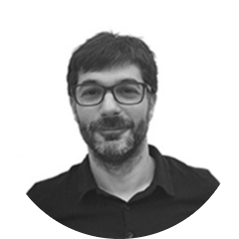
Juanjo Valderrama Arquero
Orchestrating innovation and business sides of Blendhub, a multinational company providing unique services for developing and producing powder-based food and nutrition. With extensive scientific background, he’s specialised on digital transformation and new technologies integration in business.

Emiliano Genorini
Emiliano has a degree in chemistry with specialization in analytical chemistry on environmental pollutant. He has worked for a number of top brand instrumentation companies and has more than 20 years in NIR spectroscopy, acquiring extensive experience in pharma and food markets. Since 2003 has been working as contract professor of chemometry in University of Milano and Pavia.
Oihana Gordobil & René Herrera
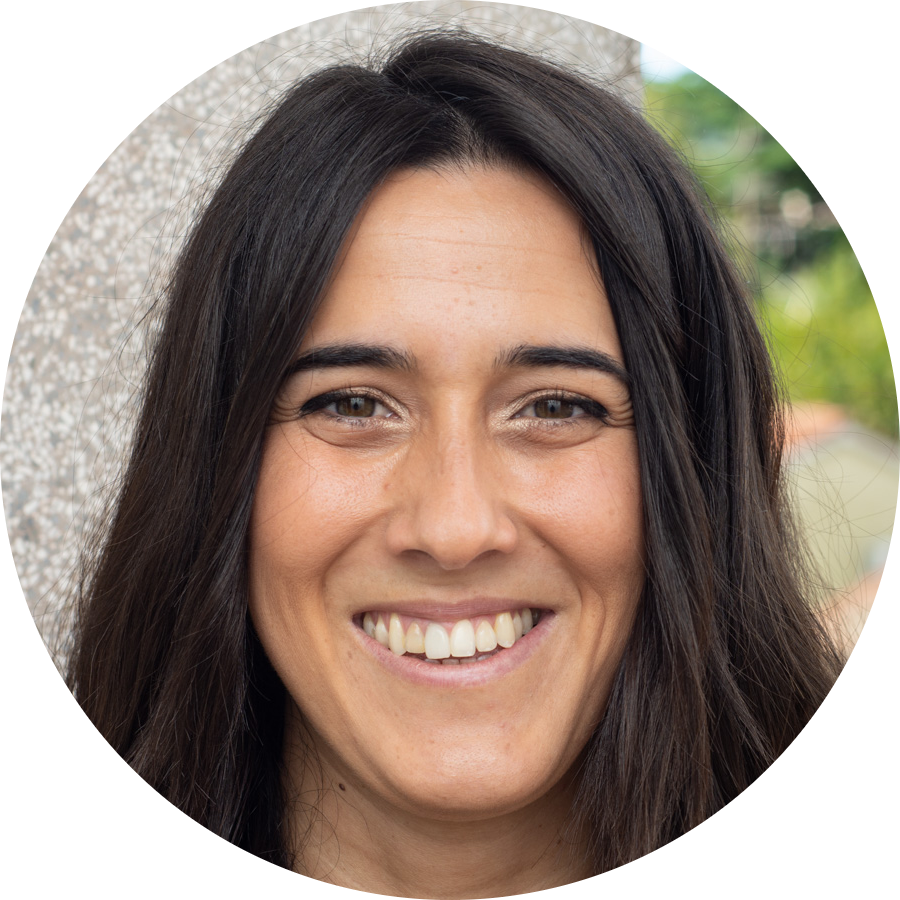
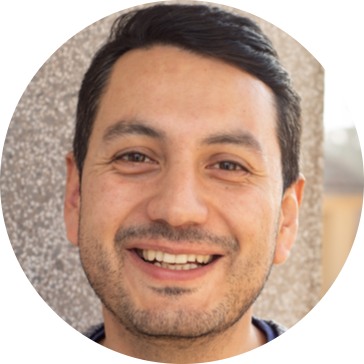
Oihana Gordobil completed a bachelor’s degree in industrial chemical engineering and a master’s degree in renewable materials engineering at the Faculty of Engineering of Gipuzkoa, University of the Basque Country (UPV/EHU). In 2018, she earned her international PhD in renewable materials engineering from the University of the Basque Country. Currently, she is working as a research associate and Marie Skłodowska-Curie fellow in the Wood Modification group at Innorenew CoE. During her research career, she has been focused on lignin and other agro-industrial by-products valorization through conversion by biorefinery processes and the development of bio-based functional ingredients, materials, and formulations.
René Herrera completed a bachelor’s degree in forest engineering and a master’s degree in renewable materials engineering at the Faculty of Engineering of Gipuzkoa, University of the Basque Country (UPV/EHU). In 2018, he earned his international PhD in renewable materials engineering from the University of the Basque Country. Currently, he is working as a postdoctoral researcher of the UPV/EHU working in the Wood Modification group at Innorenew CoE. His research focuses on the use of wood as a multifunctional material, developing methods through sustainable modifications and the development of protective products of natural origin.
After becoming fascinated by NIR technology and its huge potential to implement it in the field of lignocellulosic materials, René and Oihana embarked on the adventure of creating a new Technological-based company under the name of the LignoBasque project. LignoBasque company has been created to transfer the spectroscopy from laboratories to the production system. Our start-up aims to develop and markets highly innovative, efficient, and non-destructive portable analytical solutions for quality control in the forestry sector, the market of wood products and derivatives and biomass. Our mission is to enable NIR-visible intelligence technology and adapt it to specific applications in the market, thus being able to provide relevant information quickly and easily to the end-user.
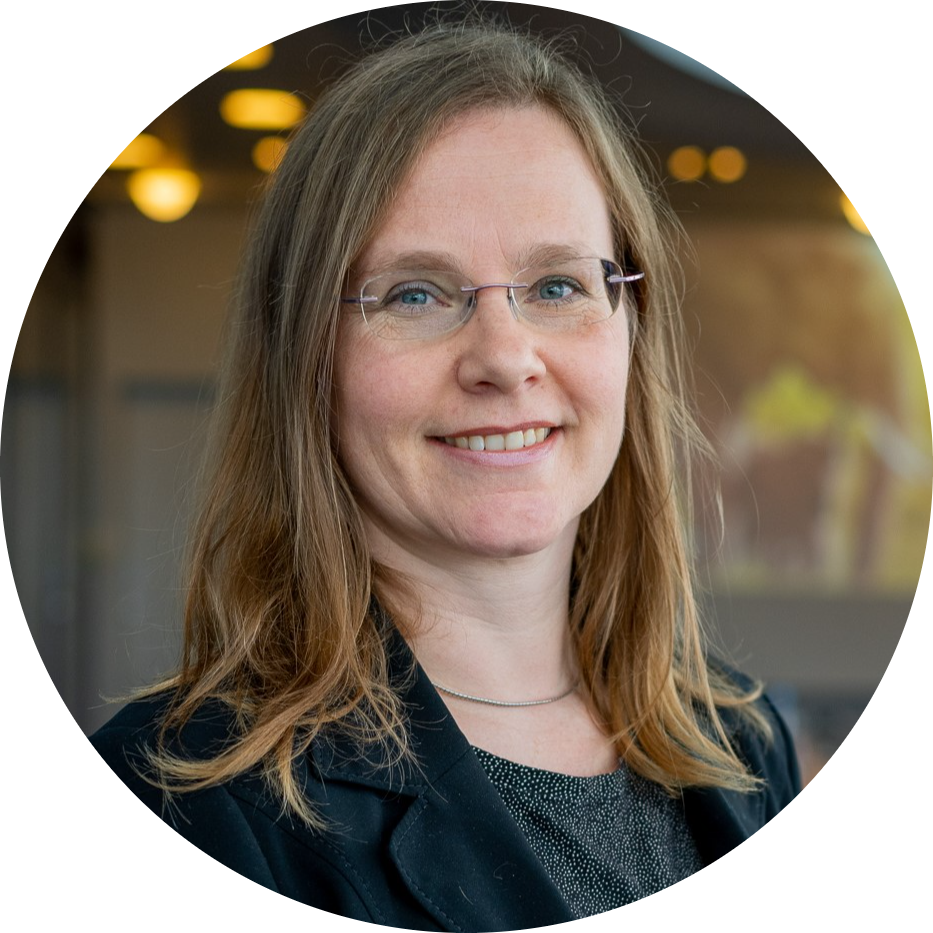
Urška Pivk Kupirovič
Since 2020, she is mainly a senior consultant supporting food industry in compliance regarding food quality and labelling, as well as the leader of the European EntreCompFood project to develop entrepreneurship competences during higher education in agri-food sector and nevertheless the researcher by hearth of the food & nutrition science at the Chamber of Commerce and Industry- Chamber of Agriculture and Food Enterprises. Previously she worked as a Researcher for the Slovenian research program “Nutrition and Public Health” at the Institute of Nutrition, as a Regulatory and Scientific Affairs Manager at Nestlé and as a Health Affairs Manager at Danone Slovenia. As a Nestlé PhD student in Perception Physiology group at Nestlé Research Centre in Switzerland she obtained her PhD. Since last year she is inspired by the book Falling in love with the future by Miquel Lladó.
Author of eminent scientific publications. Research in the field of food-consumer interactions, from various aspects: sensory, nutrition, physiology, consumer behaviour and nutrition profiling (dietary intakes and diet-related lifestyle) and food labelling. Research in the field of monitoring and evaluating the nutritional composition of foods in the market with nutritional profiling with a desire to redesign foods so that consumer choice can become a healthier choice.
I am the biggest lover of microgreens, astonished by miracles of new life that is created from small seed into a little plant. By growing indoors, in my apartment it adds nutrients to my diet. I am also a young keeper of wanna be abundance garden, discovering different varieties of green vegetables that the nature can offer.

